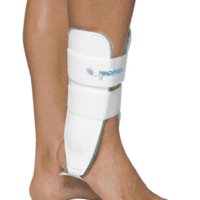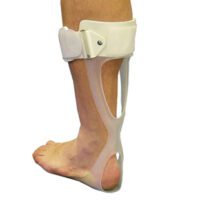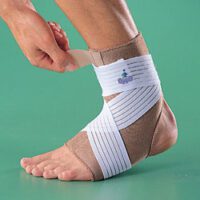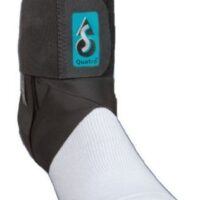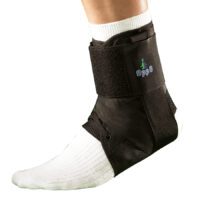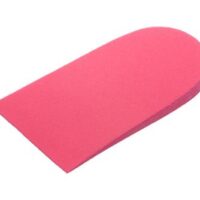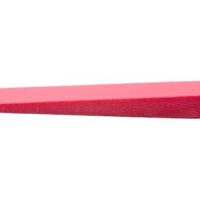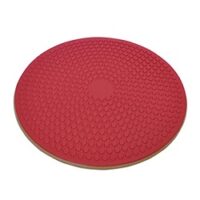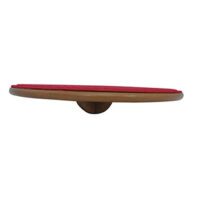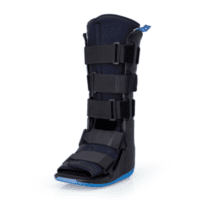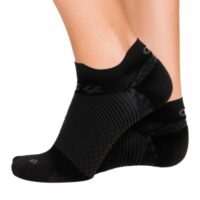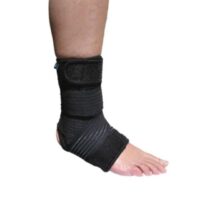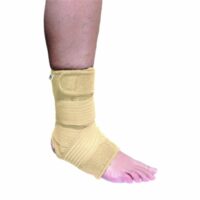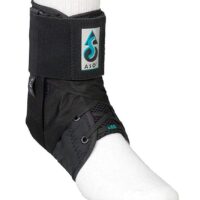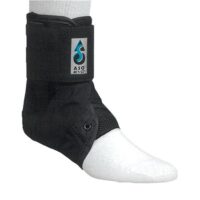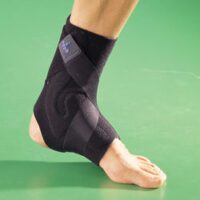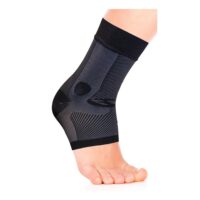Ankle Pain
Article by John Miller

Managing Ankle Pain: The Role of Physiotherapy
Ankle pain, a common complaint among Australians, can stem from various causes. It ranges from acute injuries like sprains to chronic conditions like arthritis. Physiotherapy plays a pivotal role in managing these conditions, offering relief and improved mobility.
Understanding Ankle Pain
The ankle, a complex joint, is prone to injuries and disorders. The most common include:
- Sprains and Strains: These occur when ligaments (sprains) or muscles (strains) around the ankle are overstretched or torn. They’re often due to sudden twists or impact.
- Fractures: Ankle fractures involve a break in one or more of the ankle bones, typically resulting from a high-impact injury.
- Tendinopathies: These refer to tendon injuries, which can develop from overuse or improper foot mechanics.
- Arthritis: Osteoarthritis and rheumatoid arthritis can affect the ankle, leading to pain and stiffness.
- Biomechanical Issues: Problems with foot alignment and gait can lead to ankle pain.
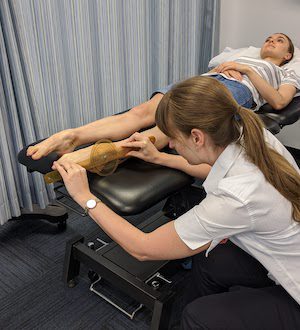
Benefits of Physiotherapy
Physiotherapy offers numerous benefits for those suffering from ankle pain:
- Pain Reduction: Techniques like manual therapy, ultrasound, and specific exercises can significantly reduce pain.
- Improved Mobility: Physiotherapists use exercises and stretches to enhance joint mobility and muscle flexibility.
- Strength Building: Targeted exercises strengthen the muscles around the ankle, providing better support and reducing the risk of future injuries.
- Correction of Biomechanical Issues: Physiotherapists can identify and correct issues with gait and alignment, preventing further pain.
- Education and Prevention: Patients learn about their condition and how to prevent future injuries through proper techniques and lifestyle changes.
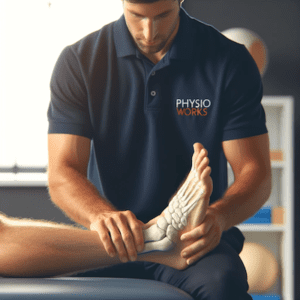
Physiotherapy Techniques for Ankle Pain
Physiotherapists employ various techniques depending on the specific condition:
- Manual Therapy: Manipulation and mobilisation to improve joint function and reduce pain.
- Exercise Therapy: Customised exercises to strengthen and improve the flexibility of the ankle.
- Ultrasound Therapy: Using sound waves to promote healing and reduce inflammation.
- Electrotherapy: Techniques like TENS (Transcutaneous Electrical Nerve Stimulation) for pain relief.
- Gait Analysis and Retraining: Correcting walking patterns to reduce stress on the ankle.
When to Seek Physiotherapy
If you experience persistent or severe ankle pain, swelling, or difficulty in walking, it’s crucial to consult a physiotherapist. Early intervention can prevent the condition from worsening and speed up recovery.
Conclusion
Ankle pain, while common, doesn’t have to be a persistent problem. With the right physiotherapy approach, it’s possible to manage pain effectively, regain mobility, and return to your daily activities. Remember, the key to successful treatment lies in timely consultation and adherence to the physiotherapist’s guidance.
What to Do?
If you’re struggling with ankle pain, don’t delay seeking professional help. A physiotherapist can provide you with a tailored treatment plan and guide you towards a pain-free life.
Related Articles
- Sprained Ankle Treatment & Recovery Guide: Provides detailed guidance on effective physiotherapy treatments for a sprained ankle and tips for faster recovery.
- High Ankle Sprain: Focuses on the specific treatment and recovery process for high ankle sprains.
- Ankle Sprain Prevention: Shares strategies and tips for preventing ankle sprains.
- Tibialis Posterior Tendinopathy: Explains the condition and physiotherapy treatments for this specific type of ankle tendinopathy.
- Peroneal Tendinopathy: This article focuses on Peroneal Tendinopathy, detailing its causes, symptoms, and effective physiotherapy treatments
- Ankle Fracture: Discusses the approach for managing and recovering from ankle fractures.
- Anterior Ankle Impingement: Covers the causes and treatment for pain at the front of the ankle.
- Posterior Ankle Impingement: Discusses the condition, causes, and treatment options for pain at the back of the ankle.
- Ankle Arthritis: Explains how arthritis affects the ankle and the role of physiotherapy in managing this condition.
- Pes Planus (Flat Feet): Describes how flat feet can lead to ankle pain and the importance of addressing biomechanical issues.
- Rheumatoid Arthritis: Provides information on how systemic diseases like rheumatoid arthritis can manifest as ankle pain.
Common Causes of Ankle Pain
Introduction
Welcome to our detailed guide on the common causes of ankle pain. As physiotherapists, we understand how various conditions and injuries can lead to discomfort in your ankle. From sprains to degenerative diseases, this guide aims to provide clear insights for the general public on navigating these issues.
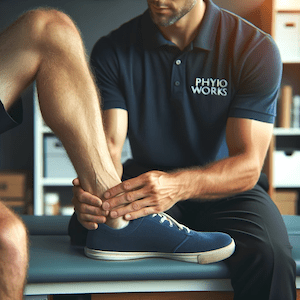

Sprained Ankles and Syndesmosis Injuries
Sprained ankles, including syndesmosis injuries, are among the most common issues we encounter. These injuries can range from mild ligament stretches to severe tears, impacting your mobility and quality of life. Understanding the specifics of each type is crucial for effective treatment and timely recovery.
Ankle Tendinopathies
Tendinopathies, such as those affecting the Achilles and tibialis posterior tendons, are common in active individuals. These conditions arise due to overuse or trauma, leading to pain and swelling in the affected area. Targeted physiotherapy can significantly aid in recovery and prevent future injuries.
Posterior Ankle Conditions
Conditions like posterior ankle impingement and retrocalcaneal bursitis can cause significant pain, especially during physical activities. Recognising these conditions early and starting appropriate treatment is vital for maintaining ankle health and functionality.
Ankle Arthritis
Arthritis in the ankle, often a result of wear and tear or injury, leads to joint pain and stiffness. Early intervention and proper management, including physiotherapy, are essential to slow its progression and manage symptoms effectively.
Biomechanical Conditions
Abnormal foot and ankle biomechanics can lead to various issues, from pain during weight-bearing to nerve compression. Understanding and treating these conditions are crucial for restoring normal function and preventing further complications.
Systemic Conditions That May Cause Ankle Pain
Systemic diseases such as rheumatoid arthritis can manifest as ankle pain. It's important to address these underlying conditions to effectively manage ankle symptoms.
Conclusion
Ankle pain can arise from a multitude of causes, each requiring a unique approach to treatment. If you're experiencing ankle discomfort, we recommend consulting a physiotherapist or doctor for a thorough evaluation. A personalised care plan can significantly improve your quality of life and mobility.
Related Articles
- Sprained Ankle Treatment & Recovery Guide - This article provides comprehensive information on managing pain and inflammation for a sprained ankle, including initial RICE steps and exercises for restoring mobility.
- Anterior Ankle Impingement: Causes, Treatments, Tips & Guide - Offers insights into the causes of anterior ankle impingement, its treatments, and practical tips for management.
- Posterior Ankle Impingement: Causes & Treatments - Explains the condition of posterior ankle impingement, its causes, and available treatment options.
- Tibialis Posterior Tendinopathy - Discusses the condition affecting the tibialis posterior tendon, symptoms, and implications for foot arch pain and ankle stability.
- Achilles Tendinopathy - Answers frequently asked questions about foot and ankle pain associated with Achilles tendinopathy and provides an overview of tendon injuries.
- How To Strap An Ankle - Guides on the correct techniques and types of tape for ankle strapping to prevent or manage ankle injuries.
Foot, Ankle & Heel Pain FAQs
Introduction
Welcome to PhysioWorks' comprehensive FAQ page on Foot, Ankle, and Heel Pain. Our expert physiotherapists are here to guide you in managing and overcoming discomfort. We’ve organised the FAQs into categories, each with a brief overview and links to in-depth articles, making navigation and understanding easier for you.


Foot Pain
Step into the various causes of foot pain and learn effective ways to relieve discomfort. Understand the impact of activities like barefoot running.
Ankle Injuries
Explore common ankle injuries and how to address them. From sprains to ligament damage, find out the best practices for care and prevention.
Heel Pain
Uncover the reasons behind heel pain and the effective treatments available. This section is particularly useful for understanding conditions like plantar fasciitis and heel spurs.
Achilles Pain
Find out how to manage and treat Achilles tendinopathy, a common concern for athletes and active individuals.
Shin Pain
Learn about shin splints, their causes, and how to alleviate this common issue, especially among runners.
Youth Injuries
Gain insights into youth leg injuries, including growing pains and heel issues in children.
Balance & Proprioception
Enhance your balance and proprioception with our professional advice and exercises.
Related Articles
- Sprained Ankle Treatment & Recovery Guide: Offers detailed advice on how to manage sprained ankles, including immediate recovery steps and physiotherapy treatments.
- Ankle Pain: Effective Management And Treatment Options: Discusses various conditions leading to ankle pain and outlines effective treatment strategies, highlighting the role of physiotherapy in pain reduction and mobility improvement.
- Plantar Fasciitis: Provides an overview of plantar fasciitis, including common causes, treatment options, and related conditions like peroneal tendinopathy and Achilles tendinopathy.
- Achilles Tendinopathy: Focuses on the causes of Achilles tendinopathy, its impact on heel pain, and a range of treatment and prevention strategies.
- Ankle Strapping: Complete Guide To Injury Prevention: Explains the benefits of ankle strapping as a preventative measure against injuries, with a focus on techniques and materials.
- Heel Pain: Explores various causes of heel pain, including tendon injuries, foot injuries, bone injuries, and systemic conditions, alongside recommended treatments.













